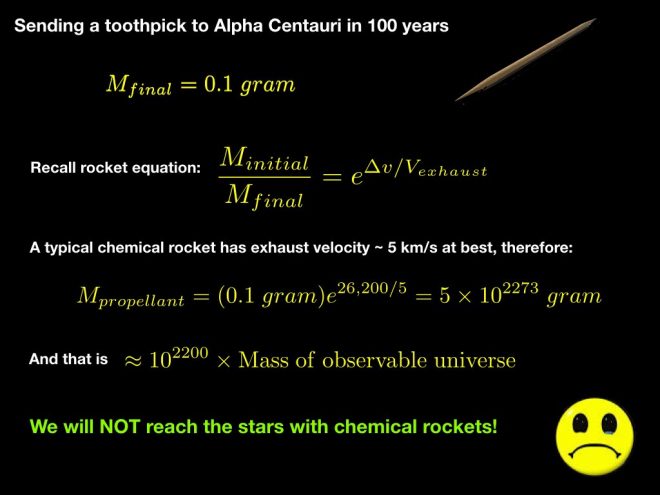Why Chemical Rockets and Interstellar Travel Don’t Mix

It’s a question that many a student of space science has asked themselves. Why can’t I just build a really big rocket to get to other stars, and the rest of the galaxy?
I thought I’d share one version of an answer to that, lifted directly from a class I teach at Columbia University. The solution comes, not surprisingly, from Tsiolkovsky’s Rocket Equation. This mathematical expression relates the desired velocity for a payload in terms of the total mass of the rocket (and hence it’s chemical fuel, for a conventional rocket) and the speed at which that fuel blasts out of the business end of the system – the so-called exhaust velocity.
To set this problem up we first ask what kind of maximum velocity a spacecraft needs if it’s going to reach, for example, the Alpha Centauri A/B system, a paltry 4.37 light years away, in a breezy 100 year miss
Allowing for both acceleration and then deceleration in order to actually arrive at Alpha Centauri rather than zip past, the maximum velocity you need is about 26,200 kilometers a second (about 4.4% the speed of light).
Next we choose a spacecraft or payload.
I choose a toothpick.
And here’s what happens next:












